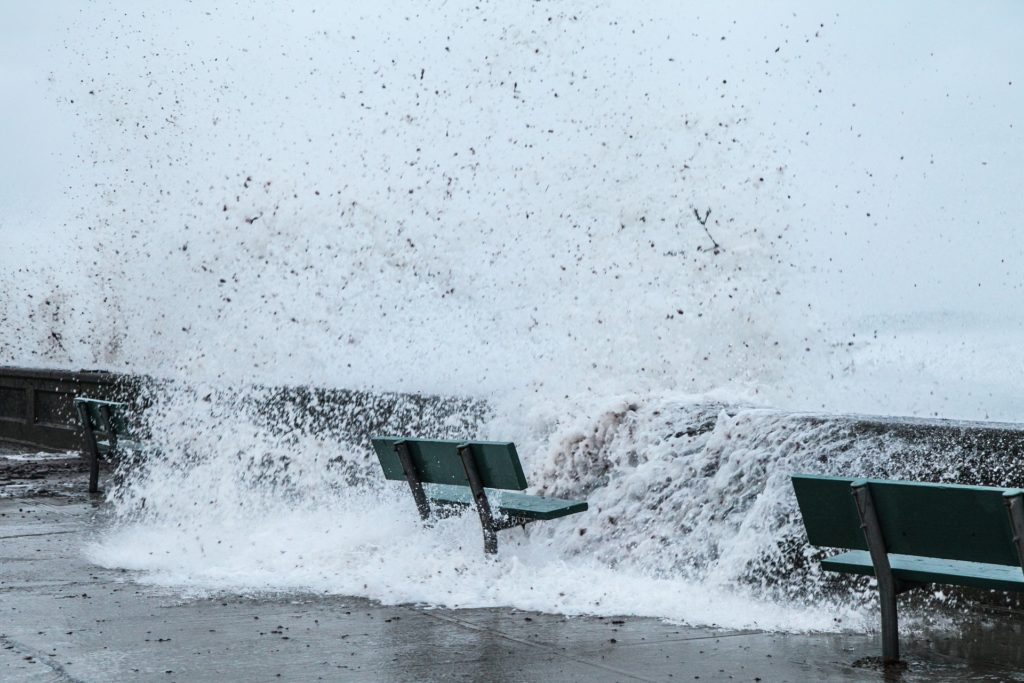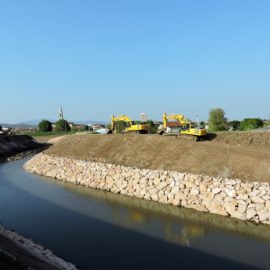
We are protected by levees and the Corps of Engineers wants to keep us safe. The levees will be raised and strengthen to protect us until 2078, 50 plus years.
The Army Corps of Engineers has given its final approval to spending $1.9 billion to keep portions of the New Orleans area hurricane levee system high enough for another half century to protect against hurricane surge and waves from a so-called 100-year storm. The approval forwards to Congress two separate plans for protection on both sides of the Mississippi River against a storm with a 1 percent chance of occurring in any year. They call for raising the heights of levees, replacing some floodwalls and building new floodwalls as needed to offset the combined effects of earthen consolidation and settlement, subsidence and sea level rise, including higher water levels caused by global warming. Upon accepting the reports, Congress would consider funding specific elevation work in future annual Corps budgets until 2078. Completion of the first levee lift projects would not likely occur until 2028. Corps approval of the plans demonstrates the Biden administration’s commitment to defending the New Orleans area for another 50 years during which climate scientists expects stronger hurricanes and rising seas across the globe.
nola.com
There are two systems to work on, the West Bank and the Pontchartrain system.
The east bank levee system, known as Lake Pontchartrain and Vicinity, would see 50 miles of levee lifts and 3 miles of replaced or new floodwalls, costing $1.24 billion. The West Bank and Vicinity system would include 49 miles of levee lifts, 1 mile of new floodwall and 268 feet of floodwall replacement. The plans also include raising portions of the Mississippi River levees on both banks to keep up with sea level rise. Approval by the Corps’ director of civil works, Alvin Lee, guarantees that 65 percent of the costs will be paid by the federal government. The other 35 percent will be paid by the local sponsor, which is officially the state of Louisiana, although the east bank and west bank regional levee authorities oversee the two levee systems and might end up paying a share of the local costs. Without Corps approval of the elevation reports, the state and the two levee authorities would continue to be responsible for the full cost of any major levee and floodwall improvements. Both authorities have been paying to elevate their earthen levees in advance of the expected need to meet higher 1%-storm elevations and to avoid the added cost of replacing fabric mats that used as armoring on the flood side of the levees. The Corps is installing the mats as a last task on its $14.6 billion in post-Katrina levee improvements, still not complete 16 years after the 2005 hurricane and federal levee failures flooded 80% of New Orleans. If the levees are raised after the armoring is installed, the mats would have to be replaced, at a significant extra cost to the local sponsors.
The work is being supervised by Alvin Lee who has served in New Orleans and helped with the main levee system after Katrina.
Lee served as commander and district engineer of the Corps’ New Orleans District office from 2007 to 2010, when much of the levee system was being rebuilt. He now oversees all civil construction efforts of the Corps. In his approval of the elevation plans, Lee adopted the findings of the Corps staff that keeping the levee system at the 1% risk level is in the national interest. If the system were not maintained at that level, the levees would settle to a lesser height and areas inside them might eventually lose eligibility for full coverage under the National Flood Insurance Program. The reports estimate the financial benefit of improving the levee systems – the avoidance of flood damages – will average $196 million a year for the east bank and $72 million for the west bank over the project’s 50-year lifetime. However, the reports also confirmed that the levee elevation plans take into account only the effects of storm surge and waves topping the levees, and not other flood risks such as levees failing for other reasons. Lee also agreed with staff that the cost of better protection – against a “200-year” storm with a 0.5% chance of striking in any given year – outweighed the benefits. The reports also say Congress authorized only 1% protection, based on the federal flood insurance standards in place in 2005.
Cost/benefit analysis is always used and I don’t think 1% and 0.5% would make that much of a difference to us. Since we are at high risk, we are always on the edge of catastrophe.
The Corps itself has rated the levee systems in the New Orleans area as “high risk”, its second-worst level, because of the billions of dollars in damage that a flood greater than 1% would cause. That rating is based on the risks of topping and the other levee failure causes not considered in the new levee elevation reports. Gov. John Bel Edwards and other officials had urged adoption of 0.5% protection, in order to reduce future flood damages. Still, officials with the Louisiana Coastal Protection and Restoration Authority and local levee authorities are happy with the Corps decision to move forward with 1% protection. The coastal agency’s executive director, Bren Haase, said a key feature of the plans is that they spread the costs to the state and local levee authorities over 50 years, providing more flexibility to come up with the local share of the money. “We’ve seen the tremendous benefits of increased flood protection across our coast, particularly over the last two hurricane seasons,” Haase said. “We will continue to pursue and evaluate higher levels of protection for the greater New Orleans region and other coastal areas, an issue that was identified in the 2017 Master Plan and is being evaluated for the 2023 plan as well.” “We are very pleased to have learned of the Corps approval for future levee lifts, and we encourage Congress to provide the funding needed to accomplish these lifts,” said Kelli Chandler, regional director of the east bank levee authority. “Hurricane Ida clearly demonstrated that the [levee system] has more than paid for itself in protecting the region.” She said the authority expects to pay for a portion of the local share of elevation costs with money already reserved for that purpose in its budget.
Of course conversations always continue as the storm hitting and the damage estimates go up.
Chandler said the authority expects to continue talking with the Corps about increasing levee protection beyond the “100-year level,” even as New Orleans city and state consider other “multiple lines of defense” measures to reduce surge risk, including raising buildings and providing access to flood insurance. “Increasing the level of protection is something we would always advocate for, and we will continue to engage our partners … to look at ways to make additional improvements to the system,” Chandler said. Nick Cali, regional director of the west bank authority, also praised the Corps’ decision while pointing to the west bank system’s success in holding back surges during 2020 hurricanes and this summer during Ida. He said the west bank authority spent more than $23 million on levee lifts in 2020, and expects to participate in cost-share decisions for the new work with the state coastal agency and other local levee agencies.
On the one hand, it is a shame we need the levees but on the other, since we do need them, it is good they are being worked on.



